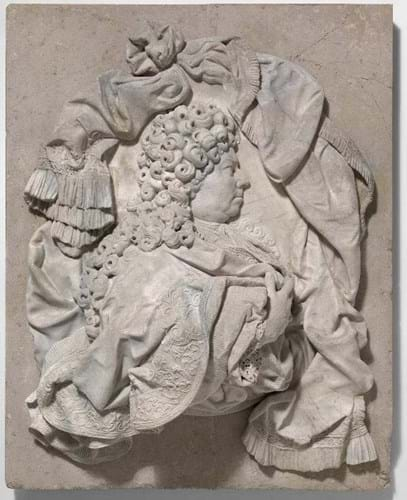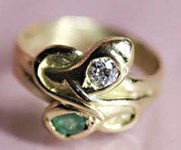
The relief sculpture by Antoine Coysevox identified as depicting Louis, Grand Dauphin, which is priced at £1.5m by Hilary Chelminski.
The 4ft 1in (1.25m) tall sculpture signed by Coysevox was long thought to depict the Marquis de Louvois, the French secretary of state for war under Louis XIV.
However, dealer and consultant Hilary Chelminski, owner of the now closed Chelminski Gallery, says that the profile in question is noble.
The Grand Dauphin (1661-1711) was the son and heir of Louis XIV. He was reputedly popular but given more to leisure pursuits than politics, including amassing a large collection of art in Versailles.
He and his son, the Petit Dauphin, both died before they could ascend the throne and it was the Grand Dauphin’s grandson who finally became Louis XV.
The previous identification to Louvois may date to 1960 when the work was offered at Galerie Charpentier in Paris during the succession sale of dealer Paul Gouvert.
Its provenance was listed to the Hotel de Louvois, one of the properties Louis XIV bought on the marquis’ death to give to his son, and from there the confusion may have arisen.
In 1981 the sculpture went on display at the Heim Gallery. A write-up of this exhibition in the Burlington Magazine noted: “It has clearly been outside for some time and is thought to have come from the Hotel Louvois. Yet it looks startlingly like a roundel from a funerary monument …the Louvois tomb, though, was executed by Giardon and had no such roundel. Could this be part of a tomb project? Could it perhaps be someone other than Louvois?”
Chelminski first saw it in a photograph while still working in her King’s Road gallery and researched it with the help of a colleague in France.
The build and appearance of the sitter, his corduroy lined hunting cloak and the sheer magnificence of the sculpture made her suspect that the Grand Dauphin was the sitter.
When presented with an image of an 1693 medal of Louis XIV and his heirs, Chelminski became more certain.
She suggests that it could have been carved as a funerary monument for the royal tombs at St Denis, which were looted during the French Revolution.
The sculpture was subsequently in the collection of dealer Christopher Gibbs. It later sold to private owners from whom Chelminski and her colleagues acquired it three years ago. Due to the size and weight it has mainly been in storage since.
Chelminski says: “We would like to see it displayed somewhere in its regal splendour and magnificence – it looks superb when properly lit.”














